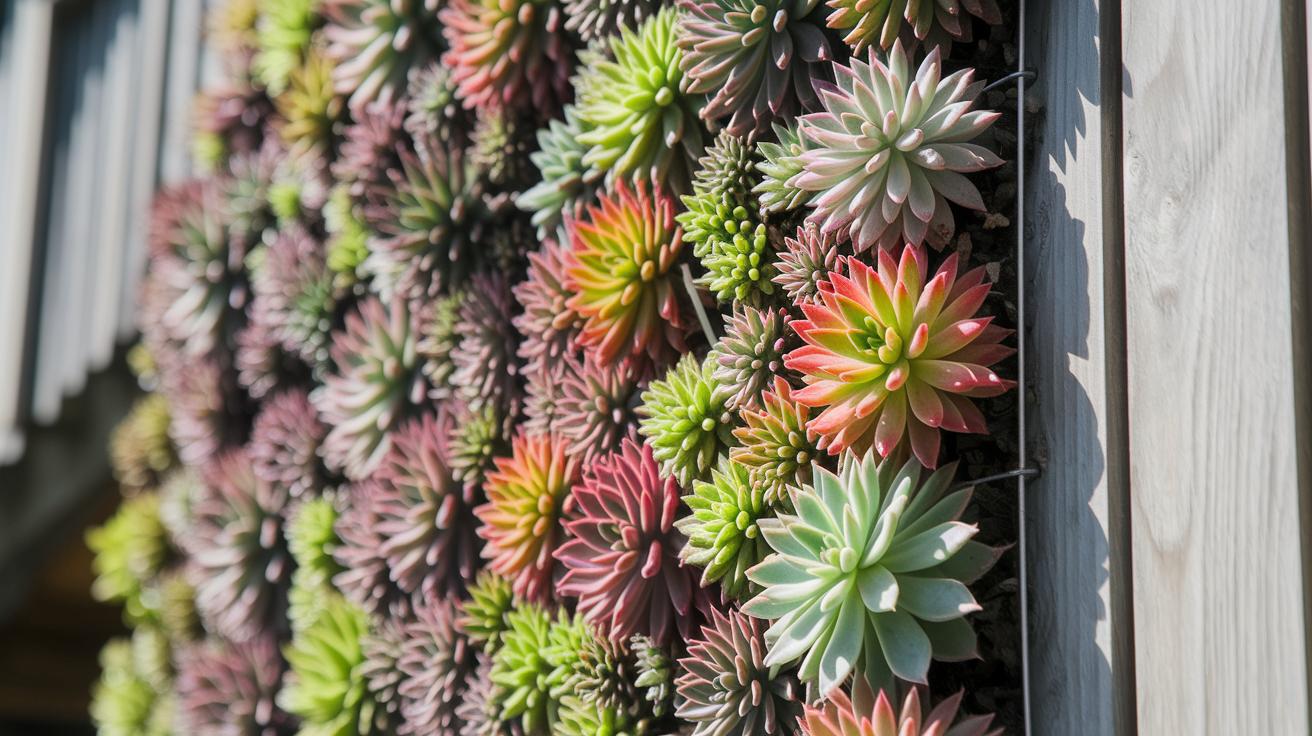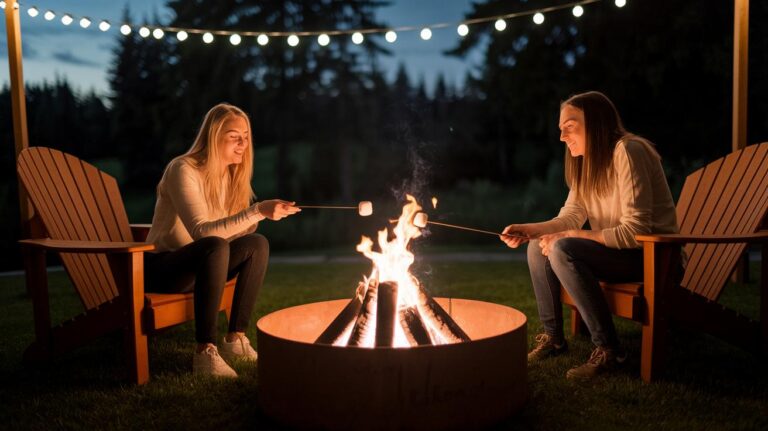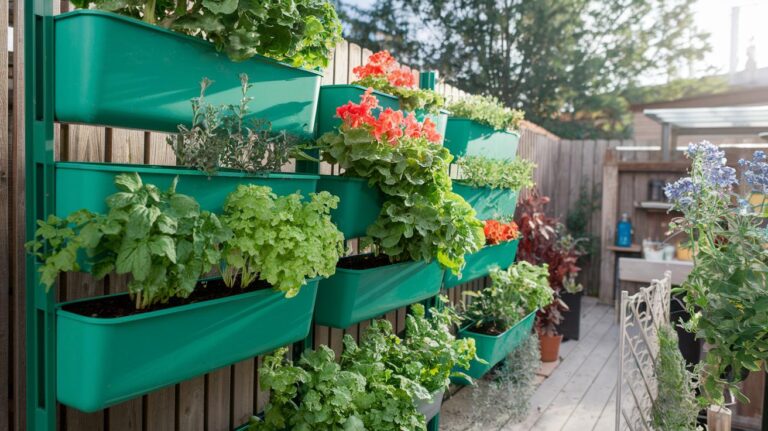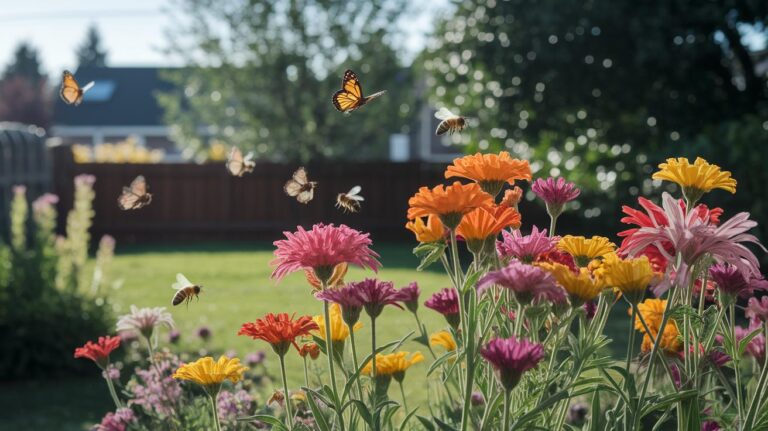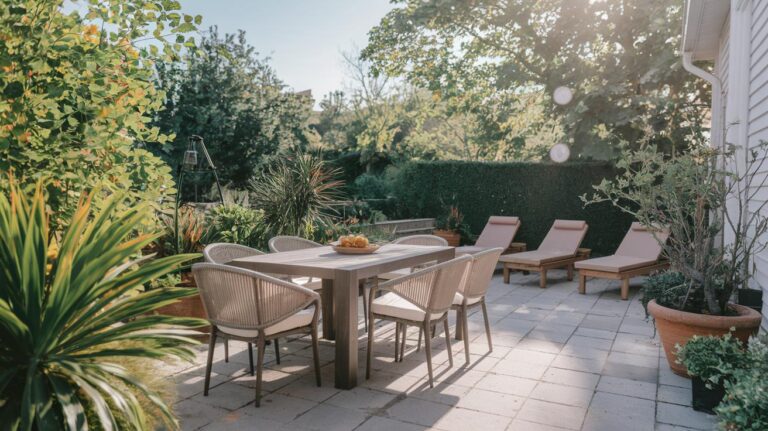Vertical Succulent Garden Layout Ideas For Stunning Spaces
Have you ever stared at your bare wall and felt it was missing something? What if you could turn that empty space into a green work of art? Imagine tucking about fifty succulents (water-storing plants) into a 4 foot by 6 foot frame, that’s enough for a mini jungle on your wall.
You’d mix rosette shapes, those round, layered leaves, with stringy trails that look like beads. Picture the plump leaves glowing in the sun, like colorful tiles in a living mosaic. Wow.
This living mural fits tiny balconies, skinny patios, or even a narrow hallway. By the way, my kid and I spent an afternoon filling honeycomb pocket grids with soil and plants, fun mess! Back to your wall…
Try a tiered ladder frame for a layered look. Or go with pocketed panels that let each succulent stretch out. Planting now sets you up for a summer green wall.
Vertical Succulent Garden Layout Inspirations
Vertical succulent gardens turn a blank wall into a living green tapestry. They’re perfect for skinny patios, tiny balconies, or a sunlit hallway that needs a spark. You can pack up to fifty succulents (fleshy plants that store water) into a 4-foot by 6-foot frame. Picture the warm earth crumbling between your fingers as you arrange each plant.
Grid pocket planters tuck neat felt pouches of echeveria (rosette succulent) and string of pearls (succulent with bead-like leaves) into squares. Staggered rows of small pots add a playful rhythm to any wall. Modular panel systems snap together like puzzle pieces. They make indoor mounting a breeze and give your outdoor facade a curbside boost.
Need a fresh layout idea? If your balcony’s shady or your hallway’s narrow, try a checkerboard of green and cream felt pouches. Or lean a tiered ladder frame against a fence to show off larger succulents at the top and tiny haworthia (small spiky succulent) below. By the way, my cat loves napping under that ladder frame. Stack them tight for a lush tile look, or leave gaps for breathing room.
Planting this way gives any bare wall a second life. You’ll love how it wakes up your space.
Creative Geometric and Patterned Vertical Succulent Designs
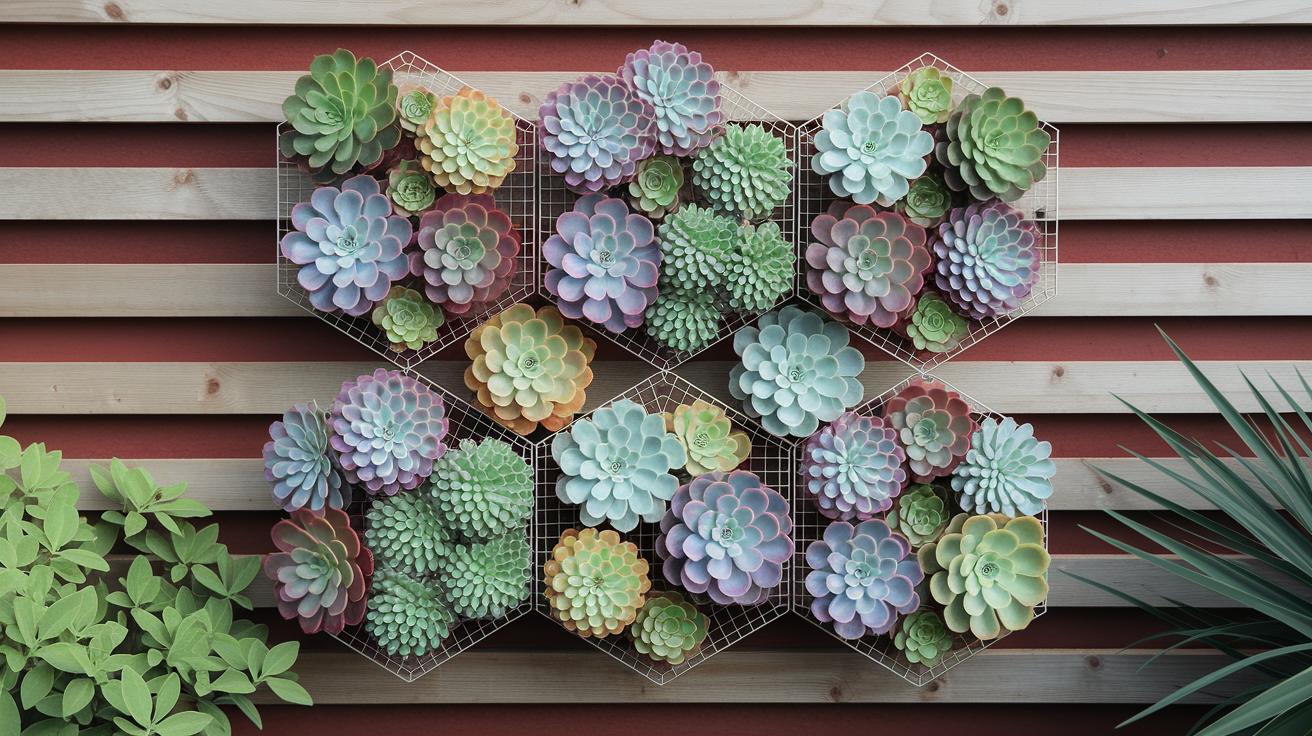
Bold shapes give any succulent (water-storing plant) wall a lively spark. Try laying pocket planters (containers with small pouches) in hexagons or triangles. It’s like each pocket becomes a little tile in a hand-painted mural.
I love how a honeycomb of tiny rose-shaped succulents (plants that look like flowers) sit in felt pockets bursting with plump leaves. Have you ever seen a succulent honeycomb like this?
Your eye hops from block to block, making a playful rhythm on a blank wall. These layouts shine on a sunlit balcony or tucked into a cozy window corner.
You can also spin those pockets into living mosaic patterns by mixing soft-pink echeveria (rose-like succulent), green haworthia (spiky water-storing plant), and deep-purple sedum (tiny-leafed succulent). Circular layouts feel like stepping around a living compass rose (map circle).
For a fresh twist, balance a big rosette on one side with a trailing string-of-pearls (succulent with bead-like leaves) on the other. Then try mirroring each row for a calm, orderly vibe in your garden art.
But don’t be afraid to play with uneven pockets. You might find surprising harmony in the imbalance.
If you lean into a monochrome look, pick succulents in shades of green or gray and let textures tell the story. Layer silky sedum petals against spiky haworthia leaves for contrast you can almost feel. I once lost an afternoon rearranging into a spiral chase (just to watch each ring catch the soft afternoon glow). You’ll fall in love with how these patterns turn a bare wall into living artwork that keeps shifting as your plants grow.
DIY Vertical Succulent Planter Construction and Materials
Let’s start with a strong support frame you’ll love. Reclaimed wooden pallets (old wood boards fastened together) bring a bit of story, hold succulents nicely, and feel smooth under your fingers. You can also use a metal grid panel or an old window shutter. By the way, I once dug a shutter out of my garage and it gave my planter so much character. Lean your frame against a wall or fence.
Then attach a sheet of waterproof backing materials like plastic sheeting or pond liner (thin, waterproof material for fish ponds). That keeps moisture from seeping into the wood or paint. Your frame stays safe when you tuck in thirsty little succulents (plants that store water in their leaves).
Next, hang felt or fabric pocket planters on the backing. Each pocket can cradle six to a dozen tiny succulent friends. Fill them with a light succulent soil mix (a soil blend that drains fast, like sand and compost) so roots don’t sit in soggy earth.
Secure each pocket with simple hardware, screws, hooks, or heavy-duty nails. Press the pockets tight against the backing so they don’t sag. Then scatter decorative stones or moss on top for a neat finish.
Add a drip-line or mister system if you want water without any fuss. Small tubes drop water right where roots drink. Before long, you’ll have a playful living wall that greets you every morning. Wow.
Succulent Species Selection and Arrangement Strategies for Vertical Gardens

I love choosing succulents (water-storing plants) for my vertical garden walls. I use a drought-resistant species guide (plants that shrug off dry spells) to find tough varieties that laugh at heat. Next, I match tiny crassula (little green rosettes) with plump pink echeveria (rosy leaf rosettes).
Soft sunlight warms each pocket. Mixing trailing plants like string of pearls (thin vines dotted with bead-like leaves) and sedum (low-growing creeping plants) lets vines spill over edges like silk ribbons. And I tuck a sprig of thyme among the pockets. Have you ever smelled thyme on a warm breeze?
But think about flow and rhythm. Skip thirsty plants and stick with ones you water once every two weeks. Pair tall haworthia (upright spiky rosettes) with those gentle trails of pearls or sedum spills. You’ll create a steady drip of shapes and shades.
Want more drama? Swap in a cluster of spiky aloe (thick-leaf plant) or a round echeveria beside smooth jade (glossy-leaf plant). Leave a few empty pockets for growth. Planting now sets you up for a showy green wall all season.
Step-by-Step Vertical Succulent Garden Installation
Ready to turn that blank wall into a living patchwork of succulents? Let’s walk through each step like friendly neighbors swapping tips over the garden fence.
-
Adjust your drip irrigation rate
Start with a fun fact: a 1 gallon-per-hour (gph) emitter (a little drip device) gives the same water as a faucet leaking every 20 minutes. Twist each valve until you see a single, steady drip, not a spray, not a puddle. Oops, I once forgot and ended up with mud pies at my feet. -
Level heavy modular panels
Lay a 4-foot level tool across the top rail. Slide thin plastic shims (tiny wedges) under any low corner until the bubble sits right in the center. You’ll know it’s true when the panels stand tall, just like your favorite row of succulents. -
Seal up any weak spots
After your first watering, run a finger along seams and edges. If beads of water split or backing peels, grab some outdoor-grade sealant and press a thin line along the gap. Smooth it out with a damp finger, think of it like icing a cake, but for your garden wall. -
Spread out the soil pockets evenly
Think of each pocket as a little plant hammock. Fill them so the weight stays balanced from top to bottom. Check your hangers the next day and tighten any that sag more than 1/8 inch per foot. You don’t want a leaning tower of succulents, right? -
Fine-tune your vertical tubing flow
Install a flow diverter at the main line to split water evenly across panels. Cut tubing so each panel’s last pocket gets nearly the same gentle push as the first. It’s like sharing cookies fairly, every succulent deserves its fair share of water.
Maintenance and Care Strategies for Vertical Succulent Walls
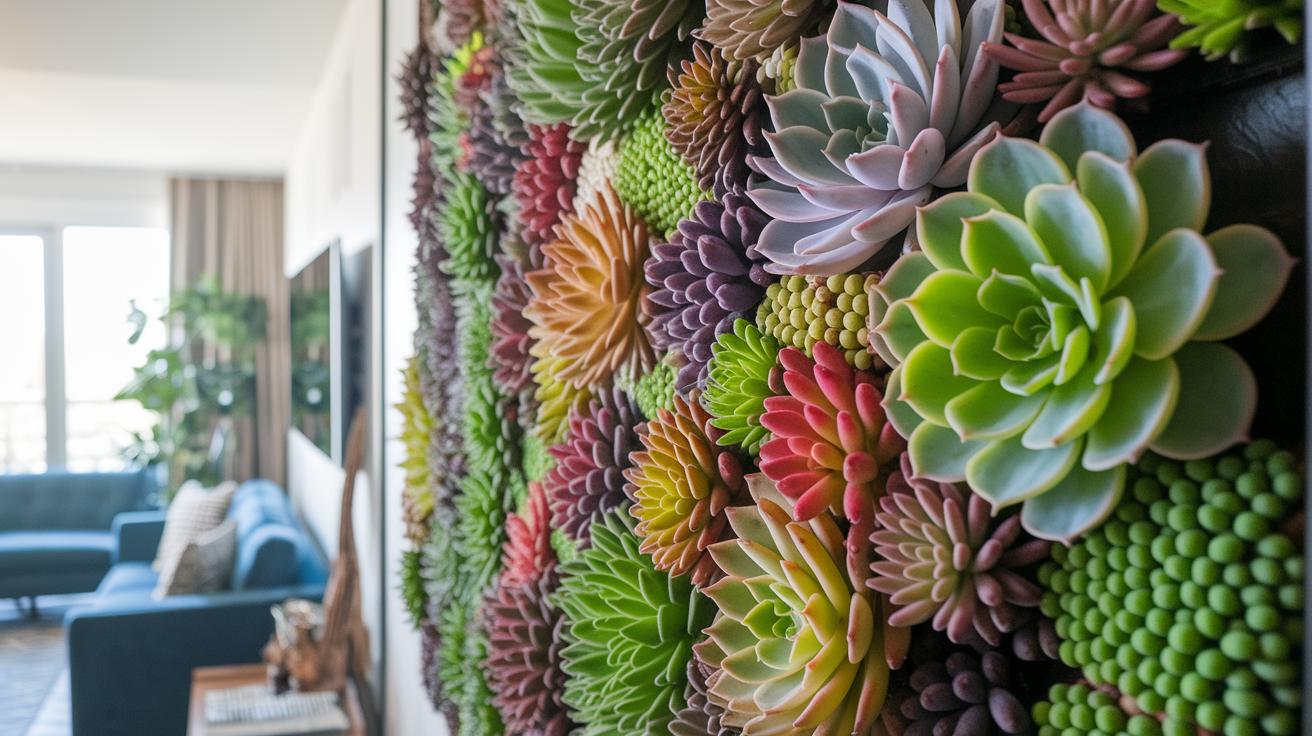
Hey neighbor, let’s talk about keeping your vertical succulent wall looking its best. First up: pocket filters (small mesh screens that keep soil from falling out). Give them a peek every week to make sure water drains through. Succulents (plants that store water in their leaves) hate sitting in soggy soil. So water sparingly, about once every two weeks, depending on your humidity level.
Try topping each pocket with a thin layer of coarse sand (grainy bits that help water pass through). It slows how fast moisture soaks in and stops soil from clumping. The warm earth feels great against your fingers when you press down lightly to check dampness.
Aim for about 4-6 hours of bright, indirect light each day. Rotate each panel once a month so all pockets share the sun fair and square. Ever notice how one side always leans toward the light? Balanced sun helps your plants grow evenly.
Each season, run through a quick checklist. Swap out tired soil or add some fresh compost (decayed organic matter that feeds plant roots) in spring or fall. In winter, move your wall a few feet away from cold drafts. When spring arrives, give leaves a gentle dust-off and trim any sunburned spots with sharp scissors.
Pest patrol is key. Look for tiny thrips or fuzzy mealybugs on your leaves. If you spot them, try an organic spray or dab on some neem oil (plant-based insect treatment). Remove any hurt leaves right away for best results.
To ward off root rot, sprinkle a pinch of powdered cinnamon (natural antifungal powder) on the soil surface. It’s like a little shield for your succulents’ roots.
With these simple steps, your vertical garden will stay healthy and cheerful all year long. Happy planting!
Final Words
You’ve jumped right into space-saving layouts with grid, staggered rows, and stunning geometric patterns.
You picked materials for your DIY planter, grouped drought-tolerant species, and followed that six-step install to water just right and keep pocket planters happy.
Now you’re set to bring your own vertical succulent garden layout ideas to life with minimal effort and maximum charm. Enjoy the fresh green art that blooms on your wall every day.
FAQ
What is a vertical succulent garden and why choose one?
A vertical succulent garden is a space-saving display where succulents grow on walls or panels. They fit balconies or narrow patios and showcase up to 50 low-water plants in a 4×6-foot area.
How do I plan a layout for a small vertical succulent wall?
Start by measuring your space and choosing grid or staggered pocket planters. Mix pot sizes and colors, then leave room for trailing varieties to drape.
What DIY materials do I need to build a vertical succulent planter?
You’ll need reclaimed wood or a metal grid frame, felt pocket liners, succulent soil mix, mounting screws, and a waterproof backing to protect your wall.
Which succulent species work best in vertical gardens?
Echeveria, Haworthia, and Crassula pair well with trailing String of Pearls or Sedum. Group by size and color, then tuck in small herbs like thyme for texture and contrast.
What steps are involved in installing a vertical succulent wall?
Choose a sunny spot. Mount a waterproof backing and hardware, attach pocket panels, fill with mixed soil, insert plants, and test watering flow.
What watering and light needs do vertical succulents have?
They need about 4–6 hours of indirect sunlight daily. Water sparingly—roughly every two weeks—ensuring pockets drain well and plants dry out between drinks.
How do I maintain a vertical succulent garden year-round?
Rotate panels for even light, trim overgrowth, check for pests like mealybugs, and give a light feeding or antifungal soil additive in spring.

